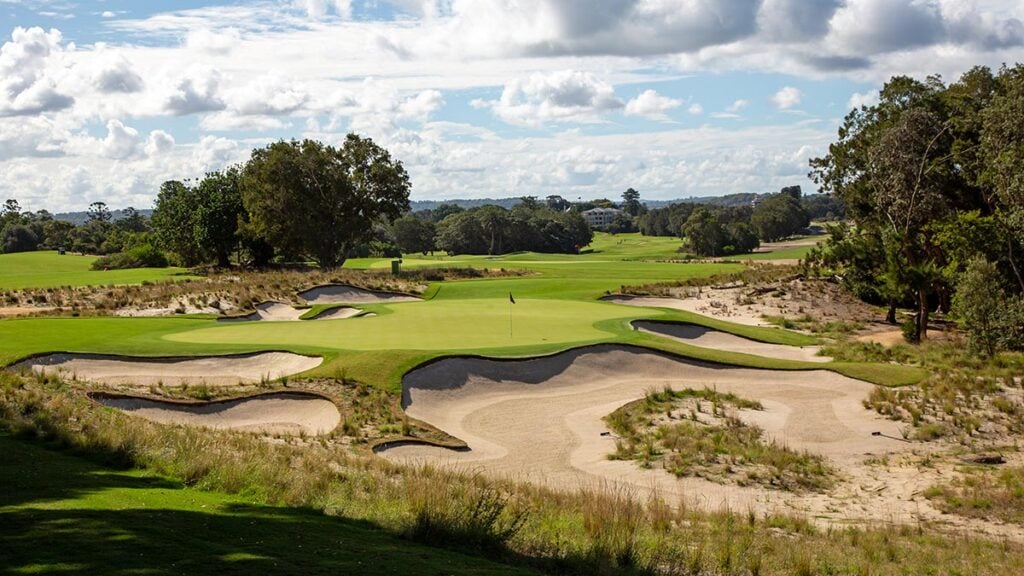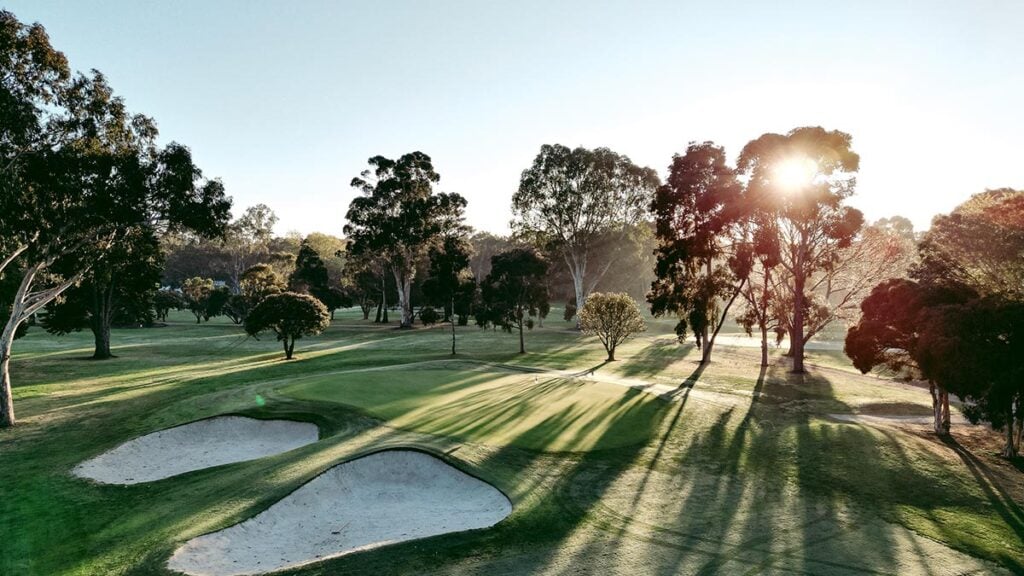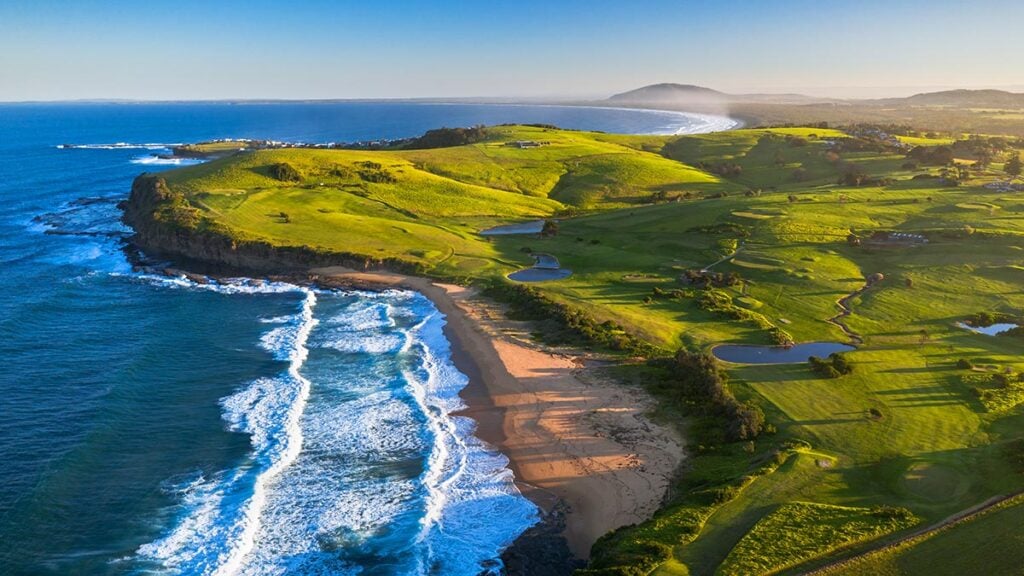Australia’s greatest golf courses were once preserved for the rich and the privileged, but in 2018 there’s barely a course in this country you can’t play.
The late Kerry Packer loved the idea of an exclusive golf club.
The man who revolutionised the way tournament golf was conducted by bringing Jack Nicklaus in to his home club, The Australian Golf Club, with the remit of designing a place that could become the permanent home of the Australian Open, loved the idea of having a golf course all to himself. So much did he value solitary refinement that Packer built his own rural plaything after his offer to purchase another was rejected.
Packer would often hold court in The Australian’s clubhouse in the area reserved specifically for its male members, revelling in the company of golfing brethren. But decades after Nicklaus’s lasting impression on Sydney’s eastern suburbs, Packer was none too pleased at the club’s new practice of hosting corporate golf days. Upon visiting the course one day only to discover it was otherwise occupied, Packer inquired as to the revenue the club generated from corporate days each year, promptly wrote out a cheque to cover the balance and said he would do the same each annum in order to keep outsiders out. It wasn’t the only time Packer wrote a big cheque for a game of golf.
Shortly after the opening of The Grand Golf Club in the Gold Coast hinterland in December 1997, Packer brought his son James and two guests to play the newest private golf experience in Australia.
“They came along and said they would like to play the golf course,” remembers The Grand’s captain, David Burrup.
“Kerry had a connection to the club at the time and after playing the course enjoyed the experience so much that afterwards they signed up to become members. I think Kerry very much appreciated the philosophy that the club was founded upon.”
So enamoured was Packer with not only the golf course but the sanctuary it provided its members, a few months later he returned in his helicopter and offered to purchase the remnant memberships of the then fledgling club. The club declined his offer, so Packer set out to build his very own in the New South Wales Hunter Valley.
Ellerston opened three years after Packer’s move to take control of The Grand was knocked back and quickly became the most sought-after invitation in Australian golf. This wasn’t a place reserved for a handful of members; this was a golf course – one of the best in the country – along with world-class polo fields, a lodge-style clubhouse and go-kart track purely for the Packer family and their friends.
There are ways to access Ellerston – being aligned with a leading golf magazine doesn’t hurt – but particularly in the early days the course would be prepared in immaculate condition on the off-chance Kerry might visit. The sad irony was that in his failing health Packer never actually got to play Ellerston himself, but that didn’t stop him from being protective of his parcel of dramatic Australian bushland, once ringing down to the clubhouse to demand whoever was on his golf course be removed before the helicopter in which he was travelling touched down.
To this day Ellerston remains one of the hardest tee-times to secure in Australia, its status as the most exclusive course in the country one that is now shared with The Grand, Cathedral Lodge north of Melbourne and Capital Golf Club amid the Sandbelt golf courses of the Victorian capital.
But fear not, because some of the greatest golf experiences not only in Australia but on the planet can be accessed simply with a bit of planning and a credit card.
Access All Areas
It was not all that long ago that there was a very clear delineation between private and publicly accessible golf courses in Australia. Essentially, if you were a club operating with a membership structure, you considered yourself private, even if no one from the outside world was fighting particularly hard to get in.
In some respects that is still the case to this day, with Saturday and many Sunday competitions reserved exclusively for the membership; the golf-playing public left to scrap for the measly number of weekend afternoon tee-times available.
For years we defined ‘public access’ courses as those open to the masses; resort courses that survived and thrived purely on their ability to host anyone with a set of clubs and five hours to spare. The 2016 Golf Participation Report commissioned by the Golf Australia organisation reported a decline in membership in Queensland and New South Wales of 2.4 and 1.9 per cent, respectively. For NSW, that was the 11th consecutive year of membership decline, totalling 19 per cent or 34,409 people to have left golf clubs.
But that doesn’t necessarily mean they left golf altogether, as indicated by the 14.85 million rounds recorded in 2016 – an increase of 2.1 per cent on the year prior.
If you are a golfer with money to spend, there are only a handful of golf courses in Australia who are no longer willing to accommodate you. Here are some of the best options available to you right now.
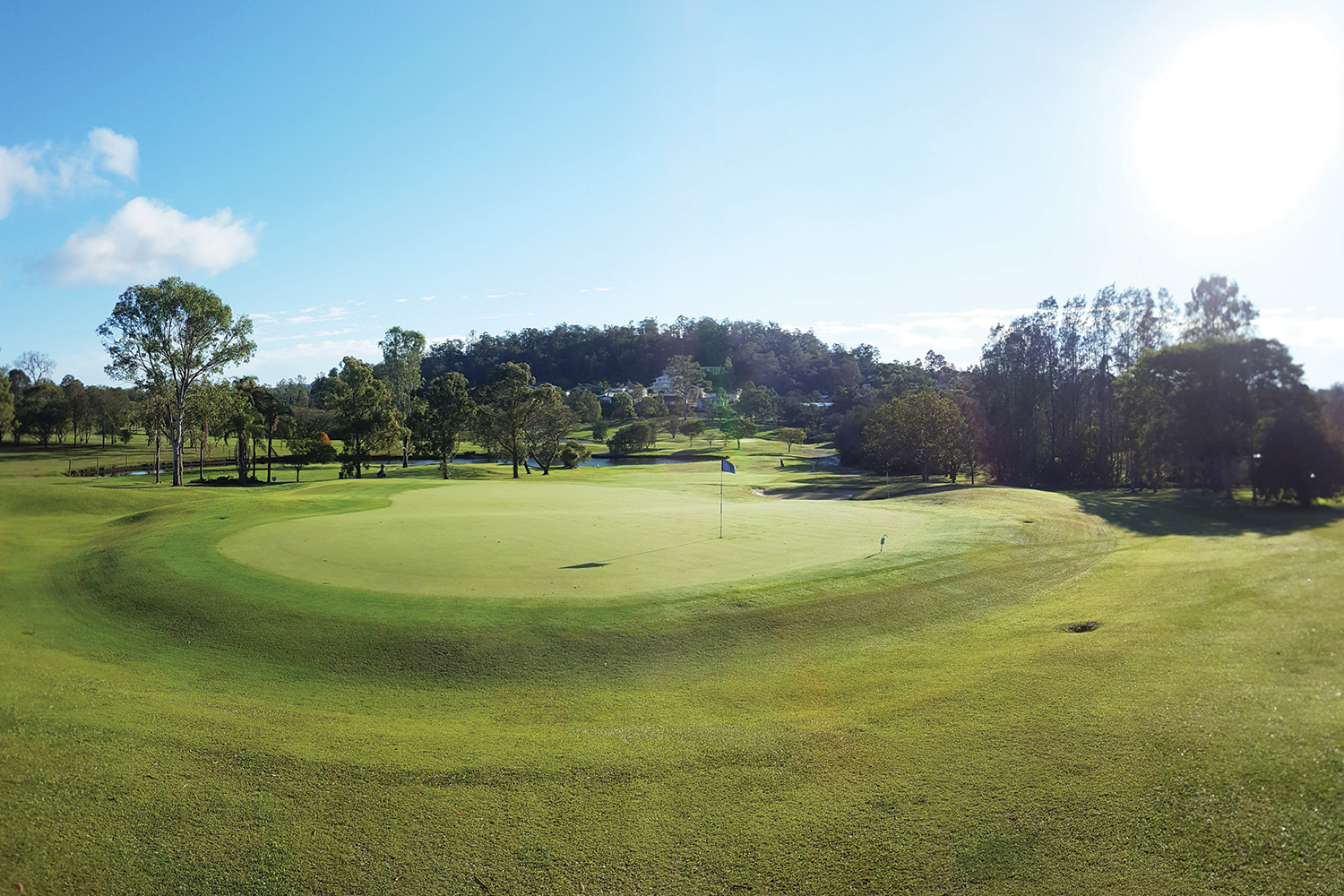
McLeod Country Golf Club
A largely unheralded course in the south-western suburbs of Brisbane, McLeod Country Golf Club is famous for being the only club in the southern hemisphere administered completely by women, but it deserves recognition for the layout itself. There are surprising and exciting elevation changes, mid-length par 4s that challenge your shot-making and a wonderful mix of par 3s that play to all four points of the compass. And the best part is that they love to share their little slice of golf paradise with visitors.
Paradise Palms
The essence of Aussie golf in the tropics, Paradise Palms [top] makes the golf clubs necessary luggage on any North Queensland holiday. Currently undergoing a green review led by 1991 British Open champion Ian Baker-Finch in conjunction with course architect James Wilcher, Paradise Palms uses a wonderful mix of strategic short holes with more lengthy challenges, the waterways that weave their way through the course adding to the tropical atmosphere. Due to a real estate development next door, Paradise Palms has reversed its nines in recent times and introduced two new holes as well as lengthening a par 4 into a par 5. There is a membership at the Cairns-based club but visitors and guests are always welcome, a round of 18 holes costing $135 or $75 for nine holes.

Links Hope Island
One of a number of courses on the Gold Coast that have stripped back the barriers to visiting golfers in recent years to make arguably the best golf experience on the glitter strip available to as many golfers as possible. Also one of many golf courses to charge what now seem exorbitant entry fees in the 1990s, Hope Island’s ownership and management have made a concerted effort to change the outside perception that visitors are not welcome. That stance has been to the great benefit of Aussie golfers, who now have unprecedented access to one of the finest layouts to come out of the design team of Peter Thomson, Mike Wolveridge and Ross Perrett. Ranked No.43 in our most recent ranking, the design has remained virtually unchanged for 25 years, building to a breathtaking crescendo with two of the most memorable finishing holes in the country. Regular rate for visitors is $140 to $150, with twilight rates as low as $59.
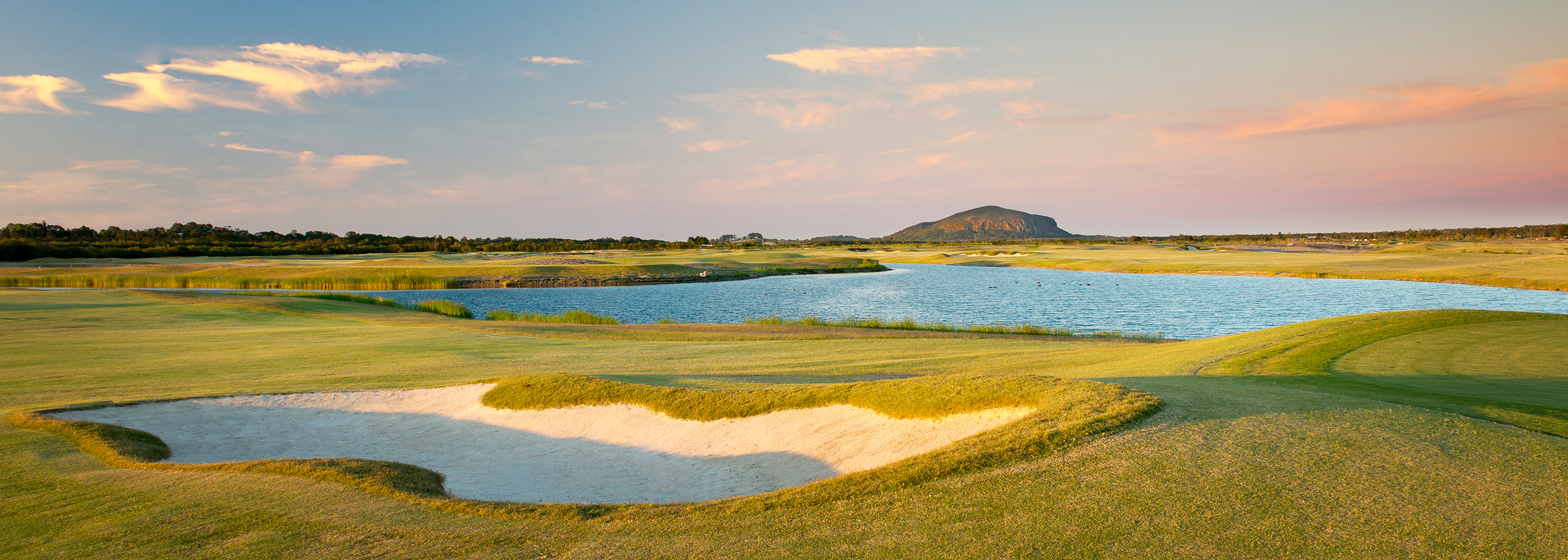
Maroochy River Golf Club
Despite its tropical location, relaxed atmosphere and almost perennial holiday vibe, the Sunshine Coast has never really rivalled the great golf destinations of Australia. The resort courses the region is predicated upon deliver the style of golf visiting players would expect in south-east Queensland – just like the palm trees and azure waters you’d expect of a round in Hawaii. But the relocation and transformation from Horton Park Golf Club to Maroochy River Golf Club at Bli Bli has delivered not only a first-class facility for the members, it has given the Sunshine Coast golf scene a slice of variety it had been previously lacking. Graham Marsh and his design team took a flat, featureless former canefield and laid out a golf course subtle in its challenges and sampling the essence of links golf with its use of the local winds as a means of defence. In the three years since its opening, the vegetation has matured to bring definition and improve playability while remaining true to Marsh’s initial design strategy.
Thousands of tourists visit the Sunshine Coast every year with golf on their minds and at $65 for a round, Maroochy River deserves to be added to the list of ‘must-play’ courses.
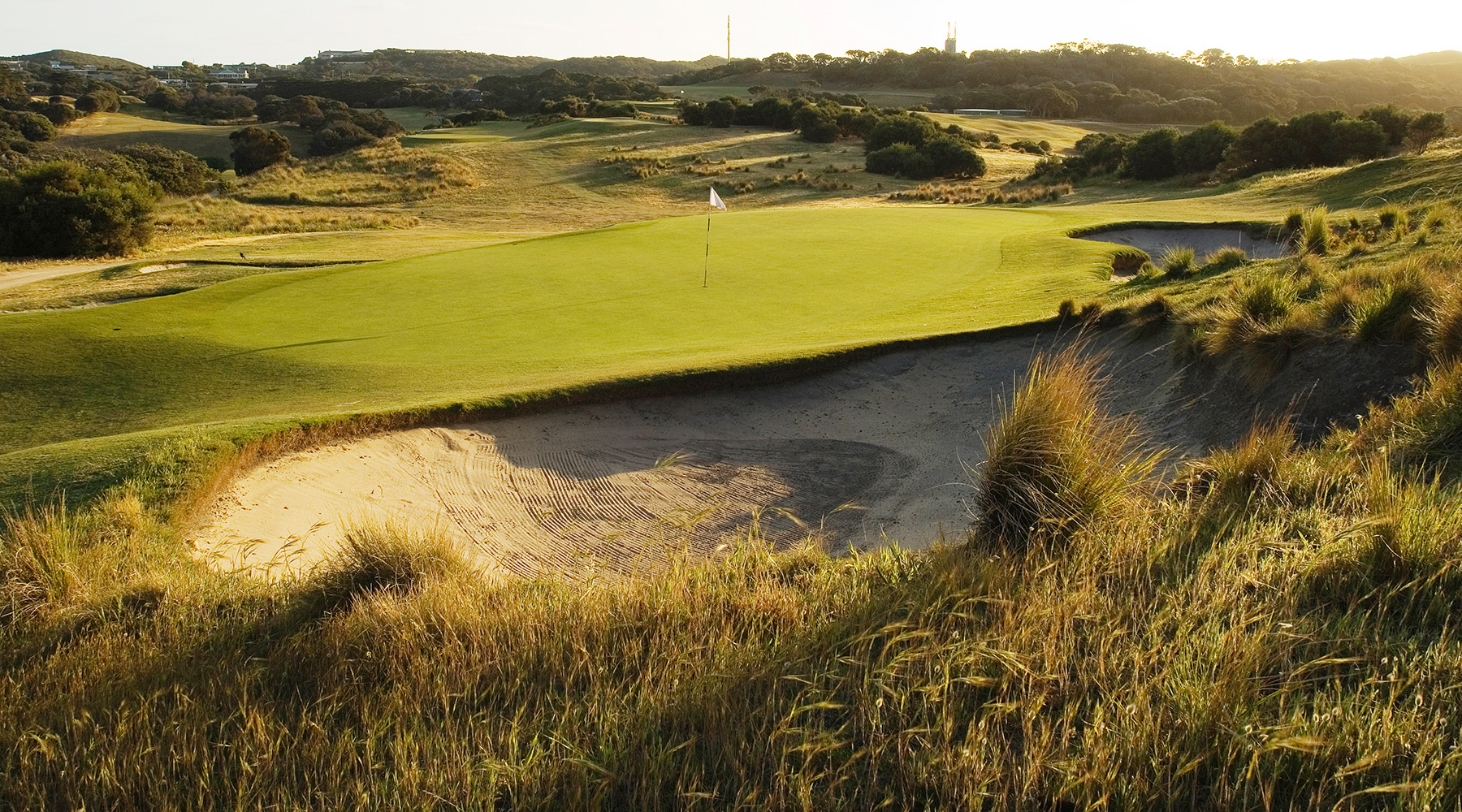
Mornington Peninsula
Melbourne’s Sandbelt may lay claim to the greatest collection of golf courses in Australia, but the Mornington Peninsula deserves its status as the most popular golf destination in the country. Nine of the top-71 courses in the country are found in the famed ‘Cups’ region 60 minutes south of Melbourne yet the depth of quality golf courses stretches farther than that. Starting with two spectacular courses at Peninsula Kingswood Country Golf Club at Dingley, Mornington Peninsula’s rich buffet of golf offerings includes such highly regarded courses as St Andrews Beach, The National’s four stunning courses, two wonderfully diverse layouts at Moonah Links and the course that started it all, The Dunes.
Cape Schanck, Portsea, Sorrento, Flinders, Rosebud… the list goes on. It is next to impossible to pull into a golf course on the Mornington Peninsula and leave in any way disappointed.
One of the most popular items on the Mornington Peninsula calendar is the Mornington Peninsula Golf Classic that this year celebrates its ninth hosting, amateurs from all across the country converging to play The Dunes, Moonah Legends, Portsea and Flinders golf courses from Monday, October 29 to Thursday, November 1, 2018.
It is a smorgasbord of top quality golf that you can’t get anywhere else in Australia.
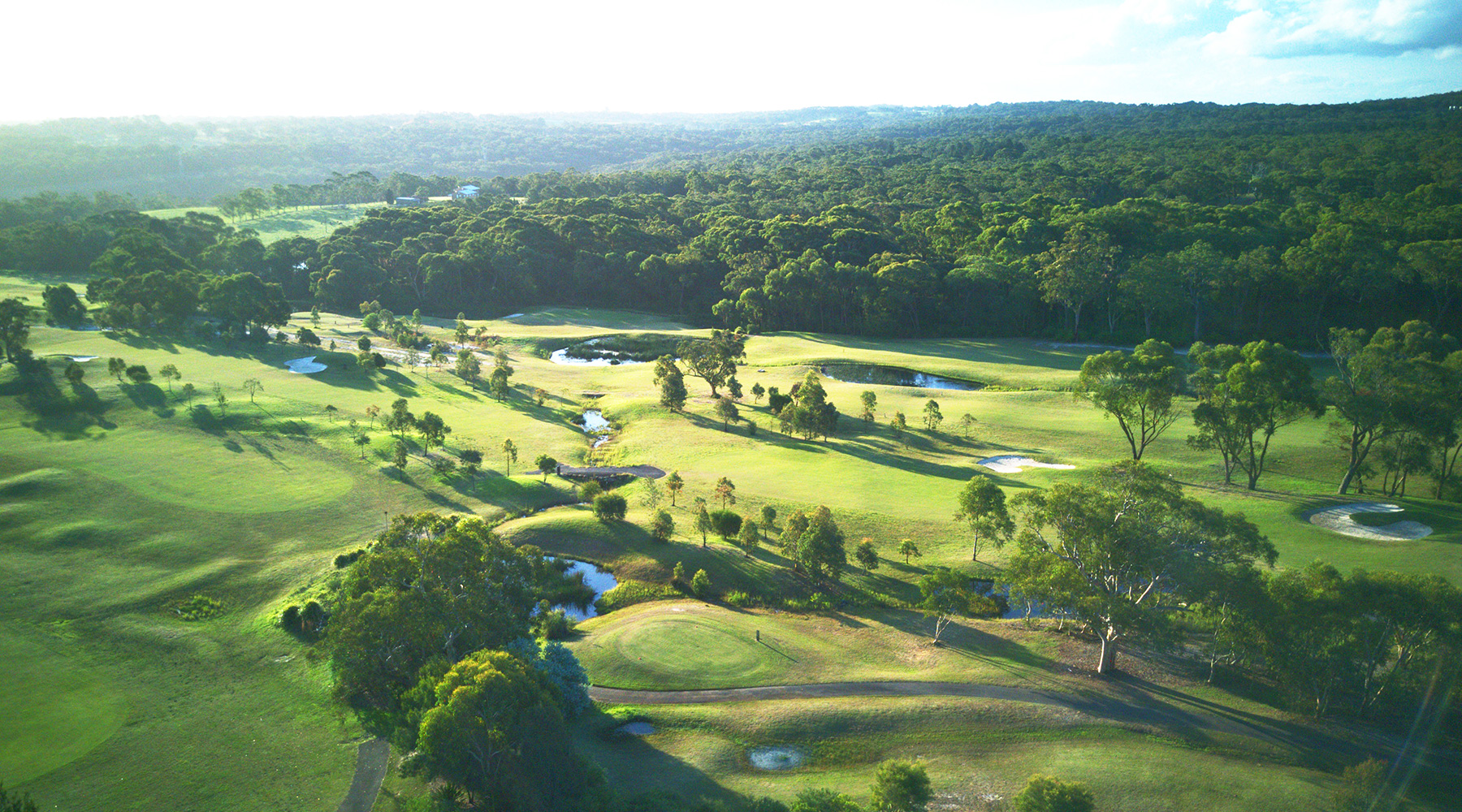
The Springs Golf Club
When Magenta Shores and Kooindah Waters opened in 2006, the Central Coast of New South Wales – an hour north of Sydney – instantly transformed into a golf destination of note. With an influx of golfers to the area, the owners of The Springs Golf Club at Peats Ridge invested heavily in upgrading the layout and its facilities. The original 11 holes designed by Al Howard were complemented by seven holes at the hands of Graham Papworth and the result is a challenging test of golf with dramatic elevation changes amid an Australian bushland setting. There are tight driving lines and water lurking at every turn, plus the hero shot coming at the par-3 16th, 112 metres over water, that can easily bring a good round undone. The visitor rate for 18 holes is just $40 midweek and $50 on weekends.
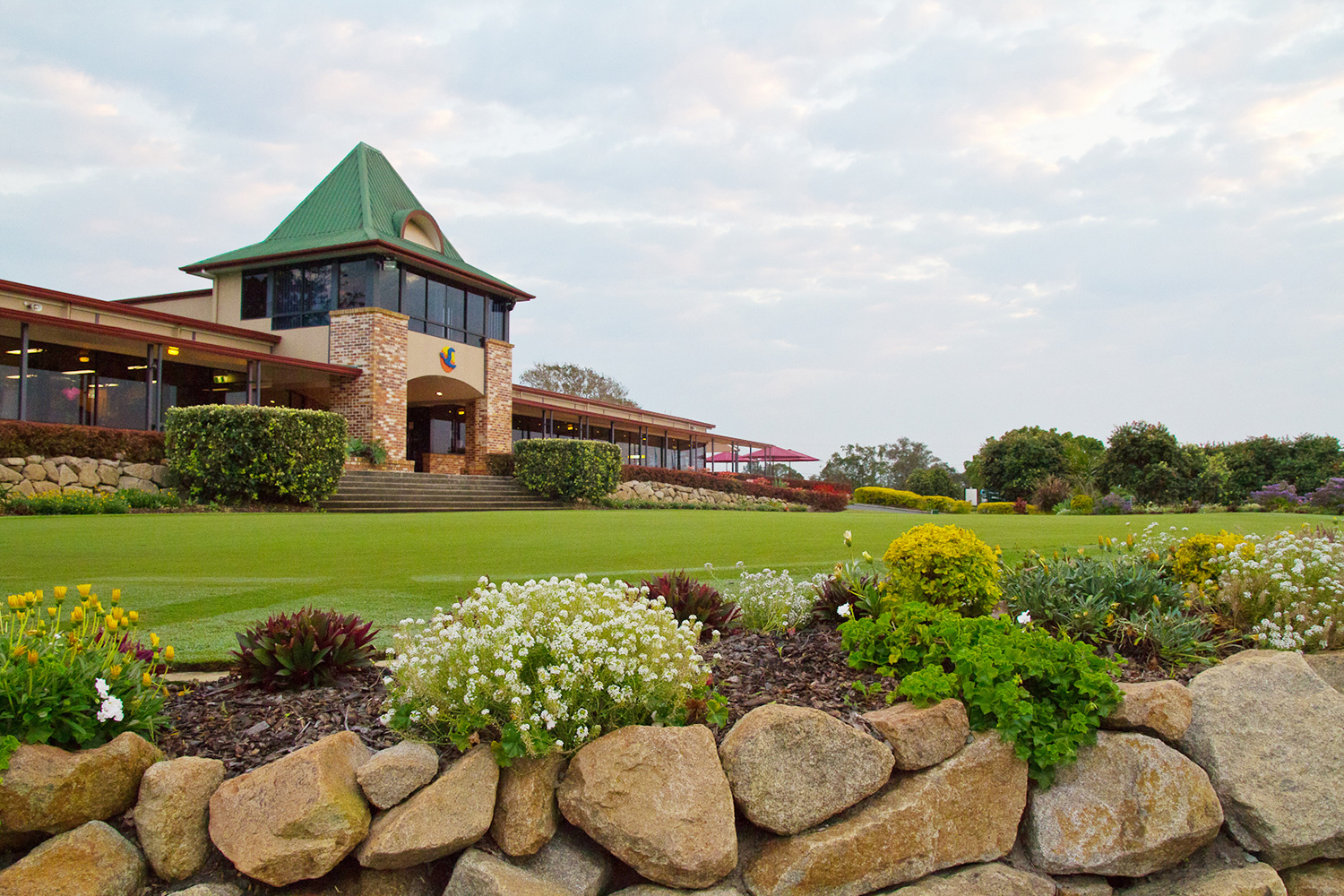
Nudgee Golf Club
Given its proximity to the airport and the city, there is no reason that a visit to Nudgee Golf Club should not be a priority on any golf trip to Brisbane.
Just 12 kilometres from the Brisbane CBD, Nudgee Golf Club is located on land that produced award-winning wines a century ago and, like a good bottle of Grange, continues to get better with age.
Currently in the process of being restored to a 36-hole facility under the expert eye of course architect James Wilcher, Nudgee’s existing 27 holes not only make for a treasured member experience but a course that is equally welcoming to visitors. A parkland course devoid of the density of trees that can often make such layouts feel suffocating, Nudgee allows golfers to plot their own way to the hole in a serene setting that is cooled by the breezes off nearby Moreton Bay.
Popular with corporate clients not only for the golf offering but the modern clubhouse, the terrace bar the perfect place to reflect on the highs and lows of the previous 18 holes. Visitors are welcome seven days a week and can save money by booking online, with green fees of $40 to play the North course and $30 for the South.
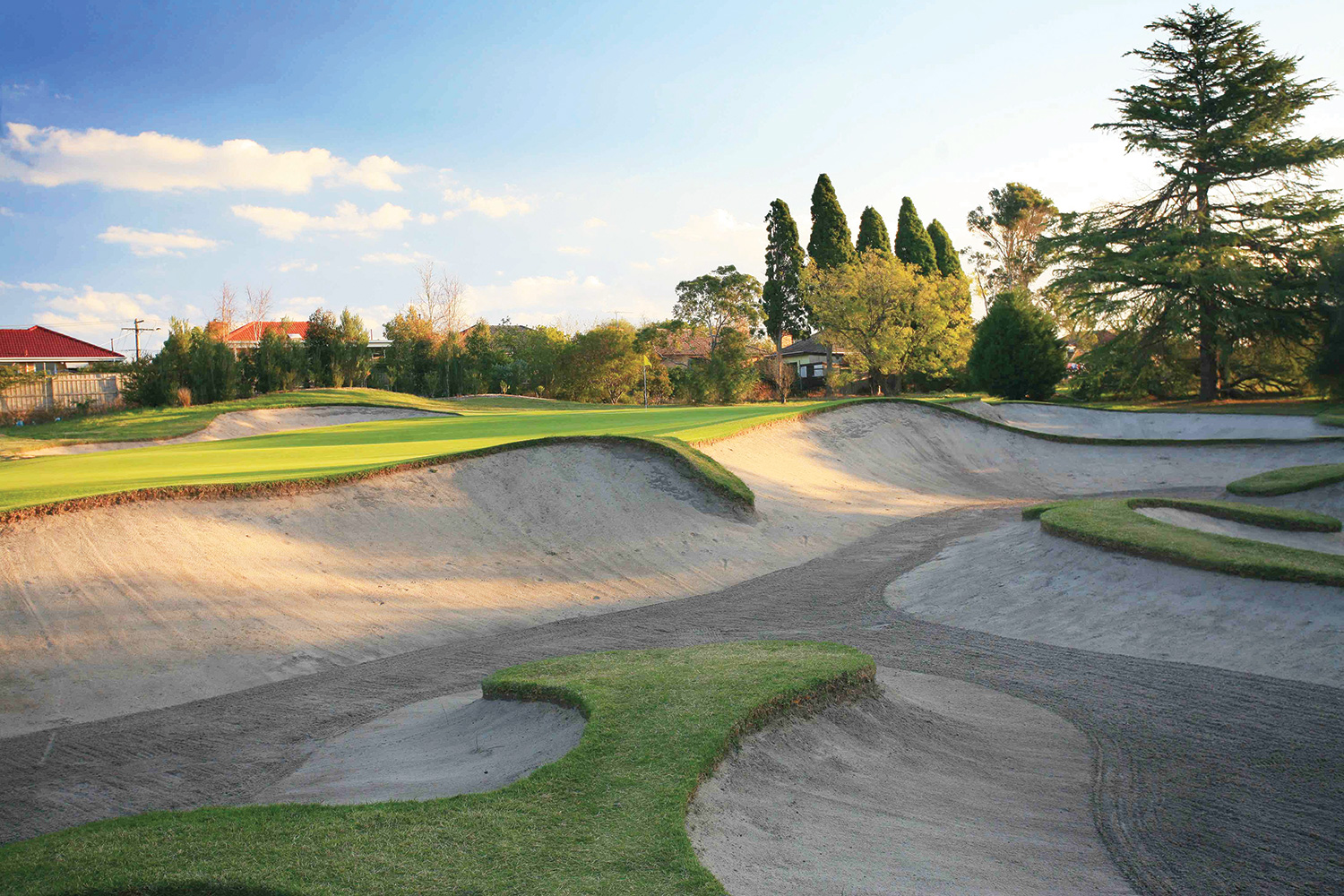
Yarra Yarra Golf Club
A proud member of the famed Melbourne Sandbelt, Yarra Yarra boasts some of the best holes in the Victorian capital – its collection of par 3s are glorious – and it is only going to get better. Renowned course architect Tom Doak is in the midst of restoring many of the characteristics that were hallmarks of the original Alex Russell design. Phase one of the works was completed in April and has seen a change to the routing of the opening six holes, reverting to Russell’s original “opening seven” with bunkers and fairway widths restored to how they played when the course first opened in 1929.
The green sites will also receive the Doak touch, again the intention to restore to Russell’s original locations where possible or at the least rebuild greens that have been altered over the years so that they look and play like original Russell greens elsewhere on the course. Yarra Yarra remains one of the pre-eminent golf experiences in the country, and being open Monday to Friday to interstate and overseas visitors who are members of a golf club is an invitation everyone should take advantage of.
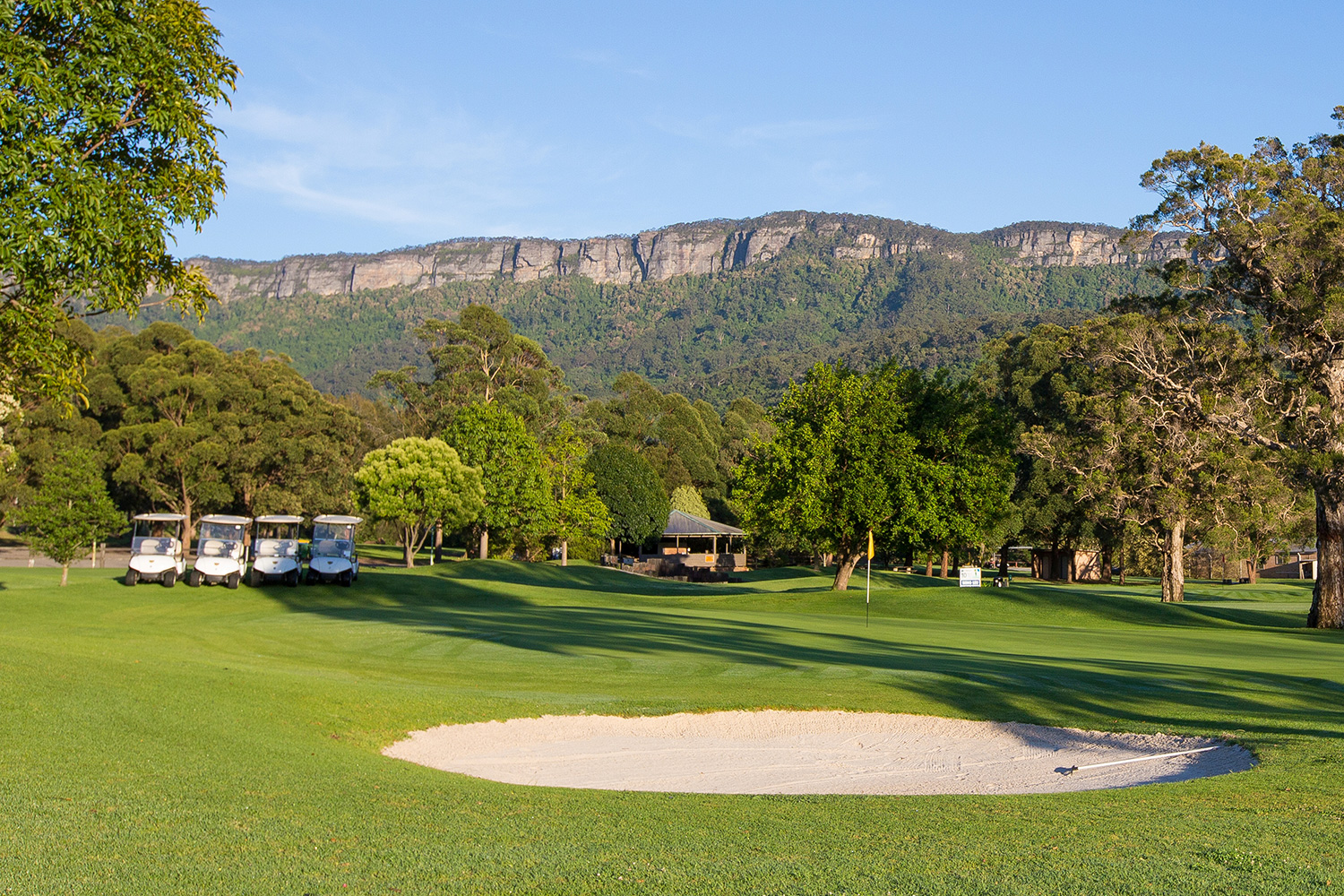
Calderwood Valley Golf Club
‘Exclusively public.’ That’s the proud claim made by Calderwood Valley Golf Club in the Illawarra region south of Sydney, a boast that ensures visitors receive a welcome of the highest order. With the rugged Illawarra Escarpment as a backdrop, Calderwood Valley utilises meandering watercourses and small green sites to provide a fun challenge across a par-70 layout measuring just 5,091 metres. And if you look at the card and believe it’s a course that will be there for the taking, beware of the par-3 11th. Playing 174 metres from the back tees, the green is protected by water around two thirds of its circumference, meaning any poorly executed long iron or hybrid will result in scorecard disaster. Calderwood Valley specialises in catering to large groups, with parties of 12 or more golfers able to play 18 holes for just $21 per person.
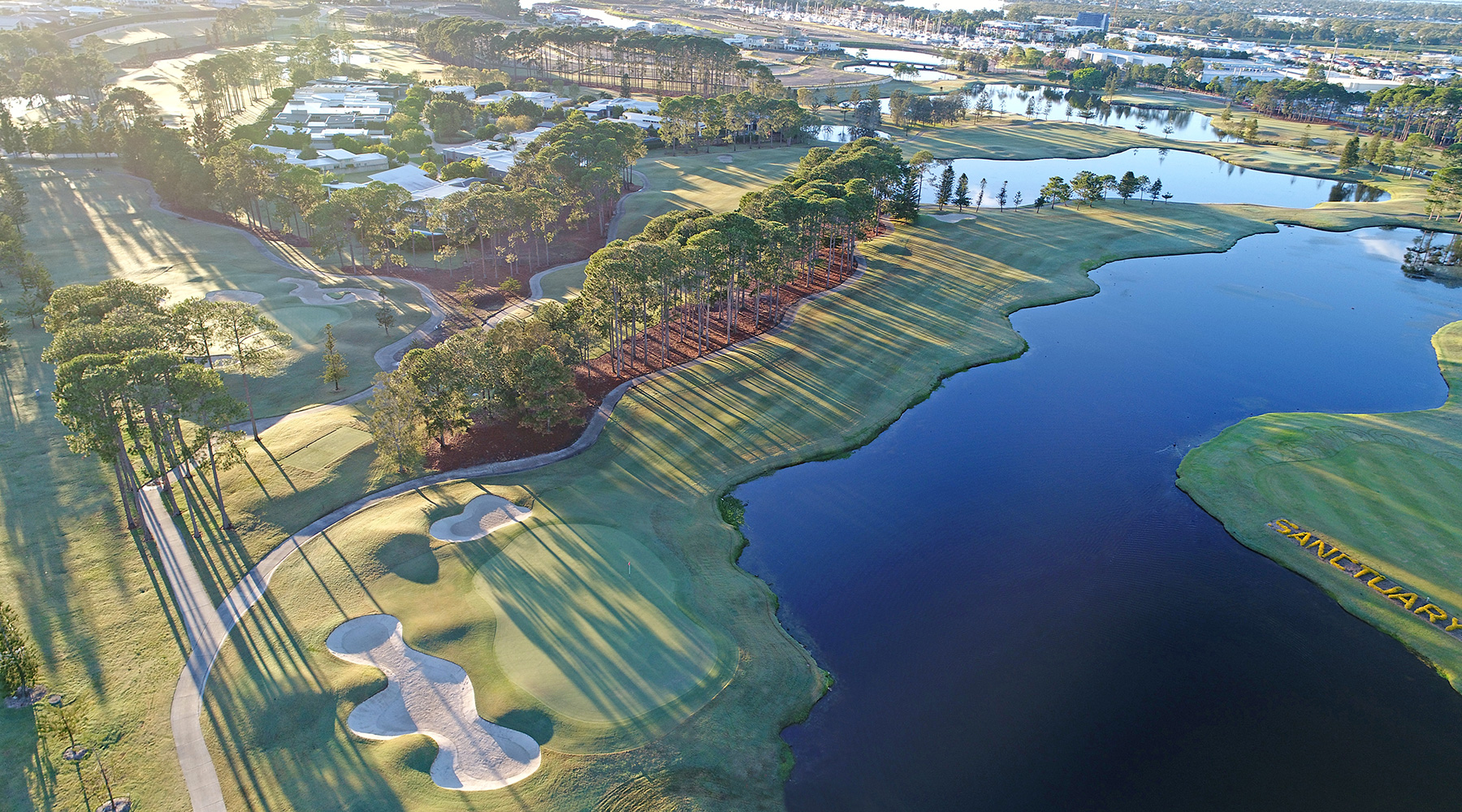
Sanctuary Cove Golf & Country Club
The Gold Coast remains one of Australia’s favourite golf holiday destinations and Sanctuary Cove is the No.1 most sought-after tee-time. The elevated status of the Ross Watson-designed Palms layout has given Sanctuary Cove two golf courses in the top-60 in the country and made the visitor experience one to savour. Guests of the adjacent InterContinental resort are able to play the exclusive Arnold Palmer-designed Pines course, but for those just visiting for the day, the Palms is now a big-ticket item in its own right. Strategically challenging par 4s get even tougher when you get to the greens, the large putting surfaces split into segments that mean simply being on the green is rarely enough. But perhaps the most memorable aspect of a round at the Palms now is what awaits after the 18th hole, the expansive deck at Arnie’s Café the perfect place to reflect and unwind. Green fees at the Palms are from $69 to $99 for 18 holes.
Nine Out Of 10 Ain’t Bad
We knew it was something of a tease but there was nothing we could do about it. The top-10 of our biennial ranking of the Top 100 Courses in Australia was often a bucket list that the average golfer had virtually no hope of ever completing.
That is no longer the case. Over the course of the past decade, four new golf courses have entered the top echelon of our nation’s finest layouts and all are open to the public 24/7.
Here’s how you can play all of Australia’s best 10 golf courses… except one.
1. (& 8) Royal Melbourne Golf Club (West and East Courses)
You can’t consider yourself a golfer in Australia and not want to play the best and most architecturally significant course we have. Host to the 2019 Presidents Cup, Royal Melbourne once required a letter of recommendation from the Queen herself for visiting golfers but there are now tee-times available on Mondays, Tuesdays and Fridays. You will have to be a member of a Golf Australia-affiliated club with a handicap of less than 27 for men and 36 for women, but for $300 (interstate guests) or $550 (overseas guests) you can play the No.1 or No.8 courses in the country.
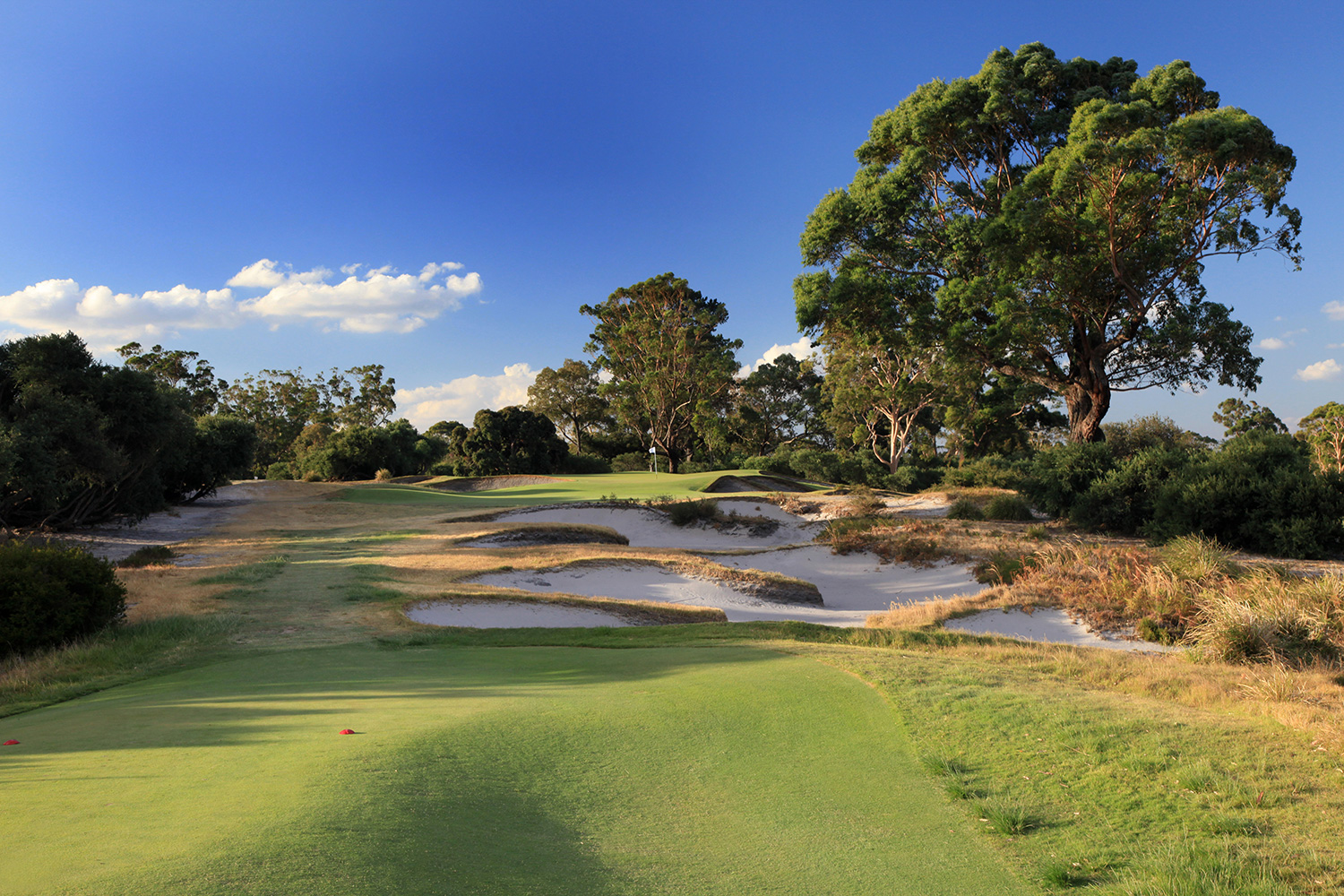
2. Kingston Heath Golf Club
Many good judges will tell you that there is a struck match between the design merits of Royal Melbourne and Kingston Heath. ‘The Heath’ provides tee-time availability for visitors on Mondays, Tuesdays, Thursdays and Fridays with a standard green fee of $400 per person.
3. Cape Wickham Links
One of four Tasmanian golf courses to have entered the Top 100 in recent years with a policy of being available to green fee-paying golfers 365 days a year. The most visually spectacular golf experience in Australia costs $175 for Australian residents and $230 for international visitors. You can also pay $220/$260 for an all-day rate that lets you play until it’s dark.
4. Barnbougle Dunes
One of the most ambitious golf projects ever undertaken in Australia, Barnbougle’s complete reliance on visiting golfers has proven a sound strategy since its opening in 2004. Ranked No.11 in Golf Digest’s latest ranking of the World’s 100 Greatest Courses, the Tom Doak/Michael Clayton design is as dramatic as it is beguiling, the enormous bunker at the par-4 fourth contrasted superbly by the small tabletop green at the par-3 seventh, the shortest but perhaps most terrifying shot on the golf course. Depending on the time of year you visit, green fees are between $104 and $119 but the best value deal in Aussie golf is the day rate of $135/$150 that lets you play to your heart’s content. And then squeeze in a few more.
5. New South Wales Golf Club
Sydney’s highest-ranked and most spectacular golf course doesn’t advertise its green fee rate as such, but in 2015 the quoted green fee rate was $300. The Alister MacKenzie/Eric Apperly design hosted the Australian Open in 2009 but is more famous for the views on offer down the par-5 fifth and across the par-3 6th holes. You’ll need to be a guest of a member to play on weekends but there are limited visitor times available on Mondays, Thursdays and Fridays. Due to the challenging nature of the course, the maximum handicap for men is 27 and for women is 36.
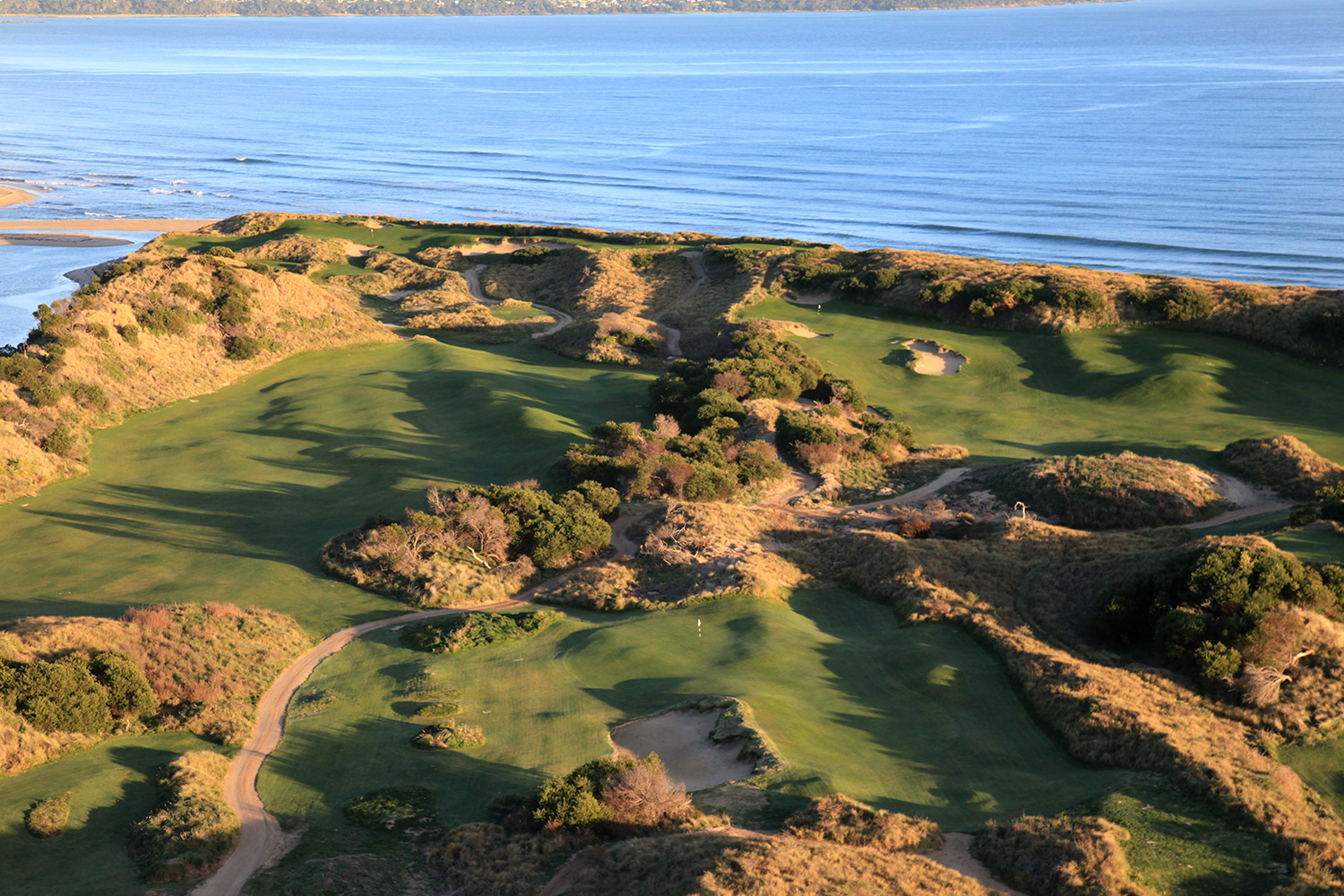
6. Barnbougle Lost Farm
The second addition to the magnificent offering at Barnbougle, the Bill Coore design is more minimalistic in nature but equally stunning given the enormous sand dunes that frame a number of the holes. Like all great golf courses the feature of Lost Farm is its short par 4s, three on the front nine measuring less than 304 metres and the third maxing out at just 232 – the ability to attack the bunker fronting the green the difference between guts or glory. So good they had to build 20 holes, Lost Farm boasts a wonderful finish starting from the 251-metre par-4 14th followed by the 164-metre downhill 15th that plays alongside the stunning clubhouse and day spa to the left and Bass Strait to the right. Green fees are $104 to $119 or $135/$150 to play all day.
7. Ellerston Golf Course
Not going to lie, this is a tough one. There are increasing opportunities to purchase rounds at Ellerston at charity auctions, but you need to be in the right place at the right time when they pop up. Unless you work for a golf magazine – and even that is no guarantee – you will need to know a Packer or have a mate who is best friends with the course superintendent. But it can be done.
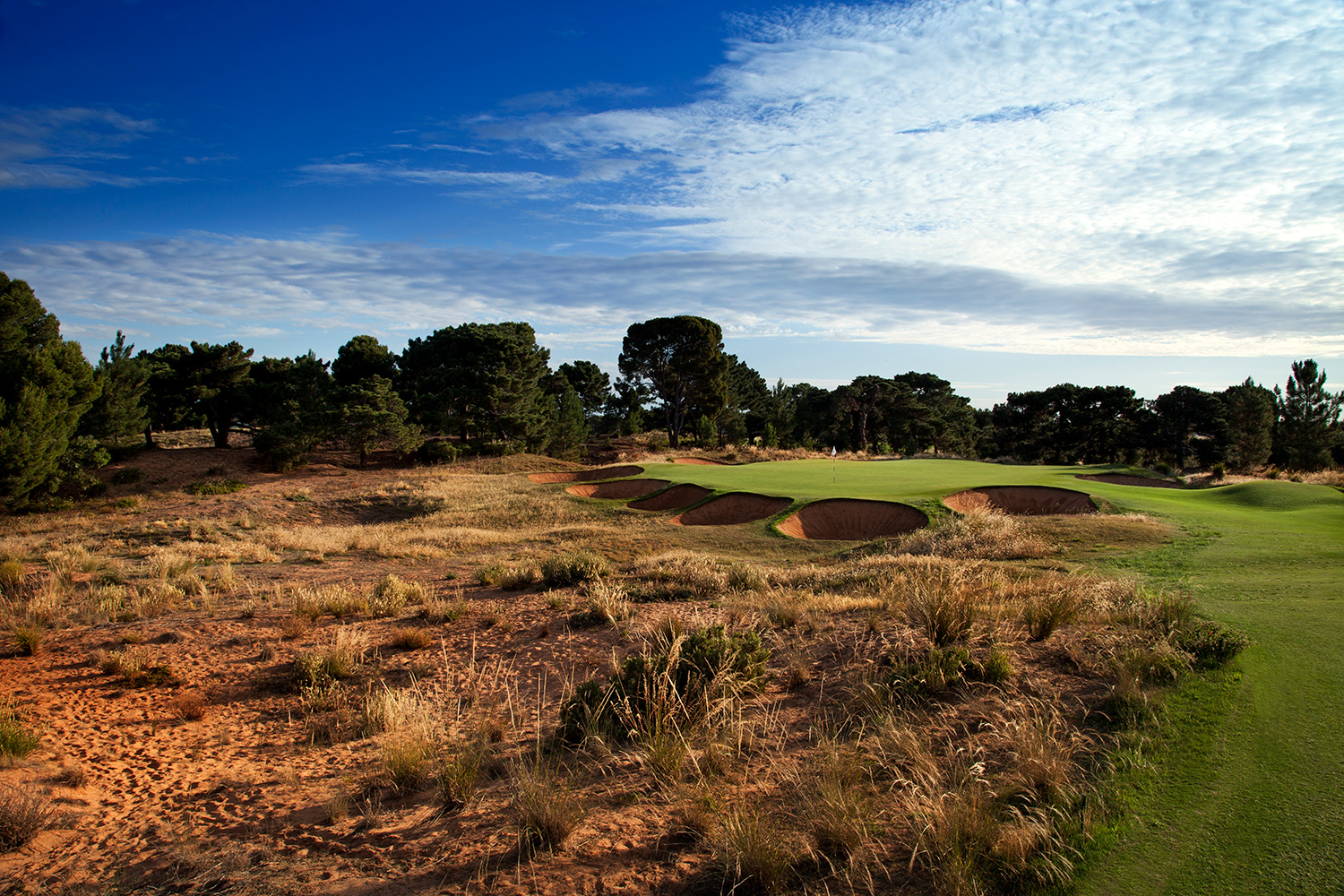
9. Royal Adelaide Golf Club
Despite having the fingerprints of a number of designers across its layout, Royal Adelaide remains one of the purest golf experiences in the country. There are no gimmicks – save for the trains that run through the course – and no extraneous water hazards, just exquisitely laid out golf holes presented in immaculate condition that provide the complete test of shot-making. Members of Royal Adelaide’s reciprocal clubs are welcome and there are limited opportunities for interstate and overseas golfers. Green fees as of January 1 for 18 holes are between $225 and $275. If you are a guest of a member you can play for just $90.
10. Ocean Dunes Golf Course
The second of the headline acts at King Island, Ocean Dunes’ entry into the Top 100 at No.10 shows that it loses nothing to its neighbour, Cape Wickham. With more inland holes, Ocean Dunes is perhaps more playable in windy conditions but boasts plenty of postcard moments throughout the round, including the par-5 first, stunning par-3 fourth, 176-metre par-3 10th and the sublime, 116-metre 14th hole that plays straight downhill towards Bass Strait. Open for public play seven days a week, green fees for Australian residents are $150 and $200 for international guests.

